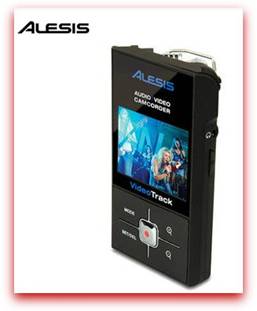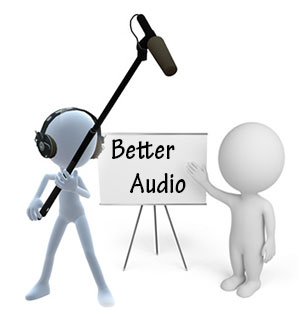 It’s odd, but sound for video is often given little, if any, thought.
It’s odd, but sound for video is often given little, if any, thought.
There are a lot of great-looking videos out there all over the web. Sadly, as many as half of these videos may look great, but they sound terrible.
Let’s talk about one particular kind of video – the talking-head video, meaning videos where someone is talking on-screen. Typically this is a person talking directly to the camera with usually only their head and shoulders being visible. That’s where the moniker “talking head” comes from. But any video where people are talking on-screen suffer the same problem and of course, have the same solution.
The primary cause of poor audio on talking-head videos is that there is too much distance between the speaker and the microphone. Combine that with the fact that a lot of web video is shot with camcorders, or even mobile devices now, using only the built-in mics, which are usually not designed for great audio. If you toss in a common 3rd element to most videos, the fact that the recording room or other space is not acoustically ideal, then you have a recipe for poor video sound.
Better sound for video: The solution for two of the root-causes
If you can somehow close the distance between your mouth and the microphone, you can hugely improve or even eliminate two of the problems I mentioned: the far-away sound and the poor acoustics sound. The reason for the latter is that the closer a mic is to your mouth (in most cases), the less of the ambient sound the microphone picks up. This makes the voice sound more immediate and clear. So the solution is to get the mic close to your mouth. Within a foot or two is optimal.
If your video camera has an external microphone input jack, you can plug a microphone into that. Many folks use lapel mics that clip to their clothing, putting it very close to the mouth. Another way to do this is to hold the mic close to your lips, as you’ve seen many a TV news reporter do.
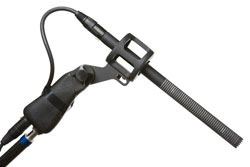
If you don’t want a microphone in your shot, you can do like they do in the movies. That is to put a microphone on a boom stand, or held by and audio guy with a boom pole, just a couple of feet over and away from the speaker’s face, just out-of-frame.
What kind of mic should I use for this?
Movies and TV shows typically use a specific kind of mic for this, called a shotgun mic. I did a review on a popular shotgun mic called the Sennheiser MKH 416, which you can see (and hear) here: Sennheiser MKH 416 Shotgun Microphone Review.
A popular alternative to shotgun mics, especially when shooting indoor video, is a small-diaphragm condenser mic (for a review of what that means, see our article What Are The Different Types of Microphones?). Sometimes these mics are called “pencil” microphones. For indoor shoots, pencil mics are usually less sensitive to room echo than shotguns.
So getting a decent microphone close to your mouth is the single best thing you can do to improve sound for video. But what if you don’t have an external mic jack on your video camera? Most camcorders don’t have seem to have them, if my shopping experience is anything to go by. Well if your camera cannot accept a microphone, you still have options. In fact your best option is to once again look to the folks making the TV shows and movies. Record the audio completely independent of the video.
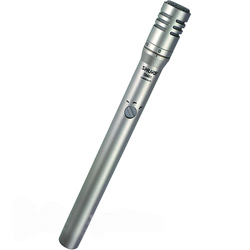
So how do I record the audio separately?
If you have a computer in the room you’re using to record the video, you can use that, along with an audio recording interface. The one I used in the video below is the Focusrite Scarlett 2i2. I just plugged my pencil mic (Shure SM81) into the interface, which plugs into my computer via USB, and put the mic on a boom stand just out of frame.
The pencil-mic-into-an-audio-recording-interface combo can cost a few hundred dollars at least. So if you’re on a tight budget, you can actually use a USB mic in the same way! You can hear the result in the video below. I used a $49 USB mic called the Samson Q2U.
How do I sync the separate audio to the video?
In either case, what you do next is open your video in your video editing program (I used Vegas Pro in the video below), import the audio into it, sync it up with the camcorder audio (which will record its awful through the built-in mics on the camera) by putting it into a new audio track below the camcorder audio track. Then once the audio files are in sync (you can manually do this just by sliding the good audio around under the camcorder audio until they match up), simply delete or mute the camcorder audio, and voila! You have the good video with the good audio.
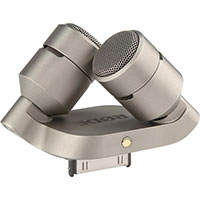
If you can’t get at least a laptop to where the video shoot is happening, you can use a mobile digital recording device like a Zoom H4, or any of a dozen other similar brands and models. These record high quality audio, usually onto SD cards, which you can then import into your video program. Of course you can get mics nowadays that plug straight into your smart phone. Some really good examples of these are the Apogee MiC or the Rode iXY. Rode even makes a lapel mic now that plugs into an iPhone or iPad – the Rode SmartLav.
In the video below, you can see and hear exactly what I’m talking about.
http://homebrewaudio.wistia.com/medias/umogpgxapc?embedType=async&videoWidth=700
If you have any tips on getting better sound for video, please leave a comment!
Cheers,
Ken
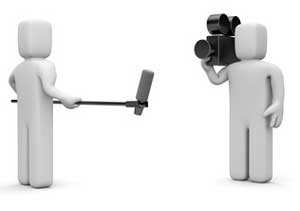 One of the biggest opportunities for improvement in audio almost across the board – amateur to professional videos – is the audio quality on videos. For some reason it just seems to get ignored. I preach from this soapbox a lot. See my post
One of the biggest opportunities for improvement in audio almost across the board – amateur to professional videos – is the audio quality on videos. For some reason it just seems to get ignored. I preach from this soapbox a lot. See my post  If I had to estimate what percentage of very professional-looking sales videos on the web were accompanied by crappy audio due to poor voice-over quality, I’d have to say at least 50 percent. That’s a lot folks! And there is no reason for it – none at all. Audio for video is not hard. If your videos are just for fun, the narration quality may not be that important. But videos for your business affect the bottom line, and amateur-sounding audio might well be limiting how successful you are.
If I had to estimate what percentage of very professional-looking sales videos on the web were accompanied by crappy audio due to poor voice-over quality, I’d have to say at least 50 percent. That’s a lot folks! And there is no reason for it – none at all. Audio for video is not hard. If your videos are just for fun, the narration quality may not be that important. But videos for your business affect the bottom line, and amateur-sounding audio might well be limiting how successful you are.

